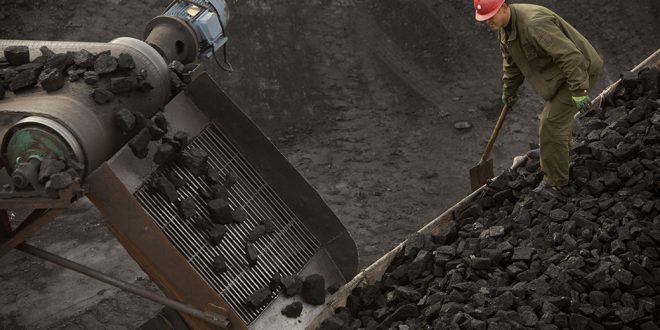The world’s seven largest advanced economies have agreed to stop international financing of coal projects that emit carbon by the end of this year, and phase out such support for all fossil fuels, to meet globally agreed climate crisis targets.
In a communique on Friday, the Group of Seven nations — the United States, Britain, Canada, France, Germany, Italy and Japan — plus the European Union said, “international investments in unabated coal must stop now.”
“(We) commit to take concrete steps towards an absolute end to new direct government support for unabated international thermal coal power generation by the end of 2021, including through Official Development Assistance, export finance, investment, and financial and trade promotion support.”
Stopping fossil fuel funding is seen as a major step the world can make to limit the rise in global temperatures to 1.5 degrees Celsius above pre-industrial times, which scientists say would avoid the most devastating impacts of climate crisis.
Getting Japan on board to end international financing of coal projects in such a short timeframe means those countries, such as China, which still back coal are increasingly isolated and could face more pressure to stop.
Call for pressure on China
Coal is considered unabated when it is burned for power or heat without using technology to capture the resulting emissions, a system not yet widely used in power generation.
Alok Sharma, president of the COP26 climate summit, has made halting international coal financing a “personal priority” to help end of the world’s reliance on fossil fuel, calling for the UN summit in November to be the one “that consigns coal to history.”
He called on China to set out its “near-term policies that will then help to deliver the longer-term targets and the whole of the Chinese system needs to deliver on what President Xi Jinping has set out as his policy goals.”
Zero emission vehicles
The G7 nations also agreed to “work with other global partners to accelerate the deployment of zero-emission vehicles”, “overwhelmingly” de-carbonising the power sector in the 2030s and moving away from international fossil fuel financing, although no specific date was given for that goal.
They reiterated their commitment to the 2015 Paris Agreement aim to cap the rise in temperatures to as close as possible to 1.5 degrees Celsius above pre-industrial times and to the developed country climate finance goal to mobilise US$100 billion annually by 2020 through to 2025.
US climate envoy John Kerry urged countries in the Group of 20 world’s largest economies to match the measures.
‘Vague’ pledges
But some green groups said while they welcomed the steps, the G7 needed to set a stricter timetable.
Rebecca Newsom, head of politics at Greenpeace UK, said, “Too many of these pledges remain vague when we need them to be specific and set out timetabled action.”
In a report earlier this week, the International Energy Agency (IEA) made its starkest warning yet, saying investors should not fund new oil, gas and coal supply projects if the world wants to reach net zero emissions by mid-century.
The number of countries which have pledged to reach net zero has grown, but even if their commitments are fully achieved, there will still be 22 billion tonnes of carbon dioxide worldwide in 2050 which would lead to temperature rise of around 2.1C by 2100, the IEA said in its “Net Zero by 2050” report.

In this Wednesday, Nov. 4, 2015 photo, a worker watches as a conveyor loads coal onto a trailer truck at a coal mine near Ordos in northern China's Inner Mongolia Autonomous Region. Demand for coal is leveling off, but it will remain a key energy source for decades, and its future is closely tied to China, the world’s biggest coal user, producer and importer. It burns 4 billion tons of coal a year, four times as much as the United States. (AP Photo/Mark Schiefelbein)
 Iran Energy News Oil, Gas, Petrochemical and Energy Field Specialized Channel
Iran Energy News Oil, Gas, Petrochemical and Energy Field Specialized Channel



